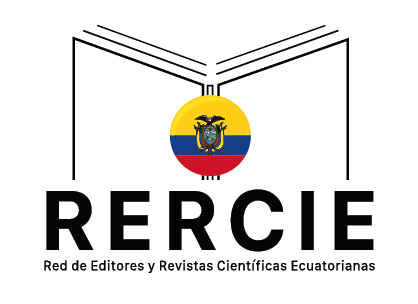International Cyber Crime: Main Trends
DOI:
https://doi.org/10.36097/rsan.v1i44.1580Palabras clave:
family life, private life, European Court of Human Rights, state, grounds for interferenceResumen
The subject of this article is global cybercrime. The relevance of the topic is increasing, as, globally, law enforcement agencies have noticed an increase in cyber crimes due to their use by organized individuals and criminal groups. The author comes to the conclusion that, in addition to the transformation of methods and techniques for committing cyber crimes, there is a change in the characteristics of cybercriminals themselves. In the article, the author notes that it is possible to observe major changes in the field of cyber threats against financial institutions and the emergence of new cybercriminal groups.Citas
Aazam, M., Khan, I., Alsaffar, A. A., & Huh, E.-N. (2014). Cloud of Things: Integrating Internet of Things and cloud computing and the issues involved. Proceedings of 2014 11th International Bhurban Conference on Applied Sciences & Technology (IBCAST) Islamabad, Pakistan, 14th-18th January, 2014, 414–419.
Chandra, A., & Snowe, M. J. (2020). A taxonomy of cybercrime: Theory and design. International Journal of Accounting Information Systems, 38, 100467.
Chaudhry, P. E. (2017). The looming shadow of illicit trade on the internet. Business Horizons, 60(1), 77–89.
Clough, J. (2015). Towards a common identity? The harmonisation of identity theft laws. Journal of Financial Crime.
Díaz, M., Martín, C., & Rubio, B. (2016). State-of-the-art, challenges, and open issues in the integration of Internet of things and cloud computing. Journal of Network and Computer Applications, 67, 99–117.
Donegan, M. (2019). Crime script for mandate fraud. Journal of Money Laundering Control.
Dremliuga, R. (2014). Subculture of hackers in Russia. Asian Social Science, 10(18), 158.
Dremliuga, R. I., Korobeev, A. I., & Fedorov, A. V. (2017). Cyberterrorism in China: Criminal law and criminological aspects. Russian Journal of Criminology, 11(3), 607–614.
Dremliuga, R., Iakovenko, A., & Prisekina, N. (2019). Crime in virtual reality: Discussion. 2019 International Conference on Cybersecurity (ICoCSec), 81–85.
Dremliuga, R., Kuznetcov, P., & Mamychev, A. (2019). Criteria for Recognition of AI as a Legal Person. J. Pol. & L., 12, 105.
Efthymiopoulos, M. P. (2019). A cyber-security framework for development, defense and innovation at NATO. Journal of Innovation and Entrepreneurship, 8(1), 1–26.
Eldem, T. (2020). The Governance of Turkey’s Cyberspace: Between Cyber Security and Information Security. International Journal of Public Administration, 43(5), 452–465.
Guiney, T. (2020). Excavating the archive: Reflections on a historical criminology of government, penal policy and criminal justice change. Criminology & Criminal Justice, 20(1), 76–92.
Hänel, H. C. (2020). Problems of conceptual amelioration: The question of rape myths.
Mirea, M., Wang, V., & Jung, J. (2019). The not so dark side of the darknet: A qualitative study. Security Journal, 32(2), 102–118.
Norgaard, J. R., Walbert, H. J., & Hardy, R. A. (2018). Shadow markets and hierarchies: Comparing and modeling networks in the Dark Net. Journal of Institutional Economics, 14(5), 877–899.
Osipenko, A. L. (2004). The fight against crime on a global computer network: International experience: monograph. M. Norma, 432.
Roman, D., & Natalia, P. (2019). Artificial Intelligence Legal Policy: Limits of Use of Some Kinds of AI. Proceedings of the 2019 8th International Conference on Software and Computer Applications, 343–346.
Shypovskyi, V., Cherneha, V., & Marchenkov, S. (2020). Analysis of the ways of improvement of Ukraine–NATO cooperation on cybersecurity issues. Journal of Scientific Papers «Social Development and Security», 10(2), 11–15.
Sparrow, L. A. (2019). The moral (im) permissibility of groping in virtual reality games. DiGRA Australia. The University of Sydney, Australia. Retrieved from Http://Digraa. Org/Wp-Content/Uploads/2019/01/DIGRAA_2019_paper_9. Pdf.
Strikwerda, L. (2015). Present and future instances of virtual rape in light of three categories of legal philosophical theories on rape. Philosophy & Technology, 28(4), 491–510.
SzHoke, D. (2019). NATO’s Evolving Approach to Cybersecurity. Foreign Policy Review, 128.
Tao, F., Cheng, Y., Da Xu, L., Zhang, L., & Li, B. H. (2014). CCIoT-CMfg: Cloud computing and internet of things-based cloud manufacturing service system. IEEE Transactions on Industrial Informatics, 10(2), 1435–1442.
Van Buskirk, J., Naicker, S., Roxburgh, A., Bruno, R., & Burns, L. (2016). Who sells what? Country specific differences in substance availability on the Agora cryptomarket. International Journal of Drug Policy, 35, 16–23.
Wood, J. A. (2009). The Darknet: A digital copyright revolution. Rich. JL & Tech., 16, 1.
Zhou, J., Leppanen, T., Harjula, E., Ylianttila, M., Ojala, T., Yu, C., Jin, H., & Yang, L. T. (2013). Cloudthings: A common architecture for integrating the internet of things with cloud computing. Proceedings of the 2013 IEEE 17th International Conference on Computer Supported Cooperative Work in Design (CSCWD), 651–657.
Descargas
Publicado
Cómo citar
Número
Sección
Licencia
 Esta obra está bajo una Licencia Creative Commons Atribución-NoComercial-SinDerivadas 4.0 Internacional (CC BY-NC-ND 4.0).
Esta obra está bajo una Licencia Creative Commons Atribución-NoComercial-SinDerivadas 4.0 Internacional (CC BY-NC-ND 4.0).
















